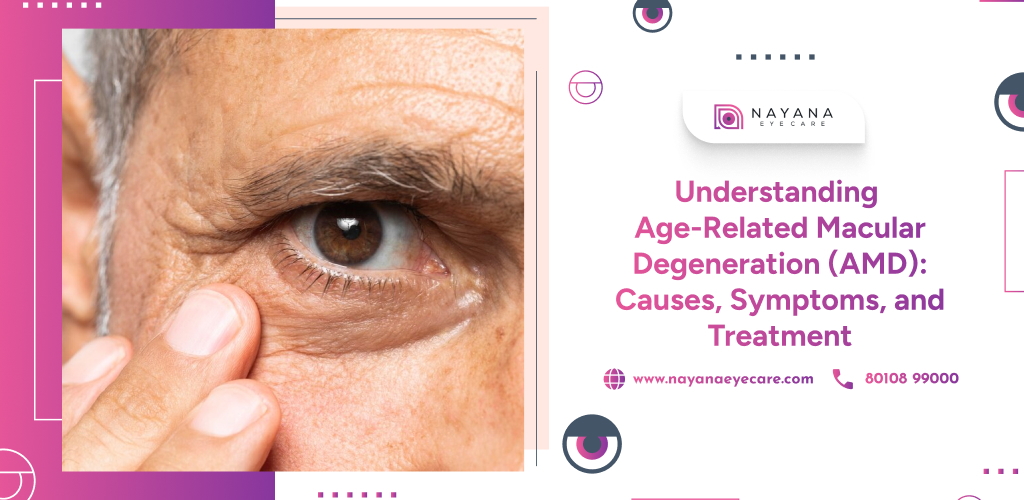Age-Related Macular Degeneration (AMD) is one of the leading causes of vision loss in adults over 50. This progressive condition affects the macula, the central part of the retina responsible for sharp vision, making daily activities like reading and recognizing faces challenging.
Types of AMD
AMD is classified into two main types:
- Dry AMD: The most common form, characterized by the thinning of the macula and the presence of drusen (small yellow deposits). It progresses gradually, leading to central vision loss over time.
- Wet AMD: A less common but more severe form, caused by abnormal blood vessel growth beneath the retina, leading to fluid leakage and rapid vision deterioration.
Symptoms of AMD
- Blurred or distorted central vision
- Difficulty reading or recognizing faces
- Dark or empty spots in the center of vision
- Increased sensitivity to light
Causes and Risk Factors
Several factors contribute to AMD, including:
- Aging
- Genetic predisposition
- Smoking
- High blood pressure
- Poor diet lacking antioxidants and omega-3 fatty acids
Treatment and Management
While there is no complete cure for AMD, treatment options help slow its progression:
- Lifestyle Changes: A diet rich in leafy greens, fish, and nuts can support eye health. Quitting smoking and maintaining a healthy lifestyle also help.
- Medications: Anti-VEGF injections can slow the growth of abnormal blood vessels in wet AMD.
- Low Vision Aids: Magnifying glasses and special devices can improve quality of life for those with advanced AMD.
Conclusion
AMD is a serious condition that requires early detection and management. Regular eye check-ups, a healthy lifestyle, and timely medical intervention can help maintain vision and enhance quality of life for those affected. Contact Us


